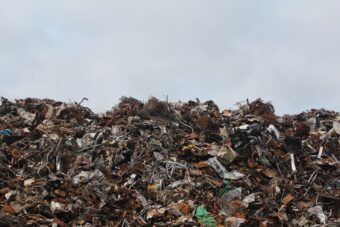
The waste that we create every day ends up in a couple of thousands of unregulated landfills and dumps all over our still beautiful country. What is waste? The Serbian Environmental Protection Agency’s (SEPA) website states that waste is any material or object created during production and service activities, as well as objects that are no longer in use or are not fit for further use and must be discarded. Therefore, waste is not only things that end up in the bin.
We have spoken with Stefan Simeunović, Director of the Serbian Environmental Protection Agency, about the current situation regarding unregulated landfills and polluters in the digitalization era and how to create a cleaner environment.
EP: Unregulated landfills are one of the biggest environmental problems in Serbia. How many unregulated landfills are there in our country, and what is the solution to this problem?
Stefan Simeunović: The data submitted to the Serbian Environmental Protection Agency by local governments show there are over 2,600 unregulated landfills throughout Serbia. Estimates are, however, that this number is almost 3,500 unregulated landfills and dumps all over the country, as well as that a fifth of the total generated municipal waste ends up in those locations. That is why unregulated landfills are one of the biggest environmental problems in Serbia.
Both last and this year, the Ministry of Environmental Protection launched two public tenders for cities and municipalities, which secured the co-financing of projects to remove unregulated landfills. Once the projects based on those tenders are implemented, close to 700 unregulated landfills will have been removed country-wide.
To preserve already cleaned locations, the Ministry also provided funds for video surveillance that local self-governments install on cleaned locations, providing certain technical requirements are met.
The Ministry’s competitions are extremely important because they encouraged cities and municipalities to think more about the problem created by unregulated landfills, to nominate projects and, with the support of the state, to finally come to grips with this problem that spans several decades.
IN FOCUS:
- COMPLETELY ECOLOGICAL
- THERE IS NO ALTERNATIVE TO RENEWABLE ENERGY
- A BETTER LEGAL FRAMEWORK AND INCENTIVE MEASURES ARE A CONDITION FOR THE DEVELOPMENT OF THE RECYCLING INDUSTRY
EP: Construction waste is a big segment of the waste deposited in unregulated landfills. How should both individuals and companies properly dispose of this type of waste? How do large companies in Serbia dispose of their waste?

Stefan Simeunović: There are two types of construction waste — non-hazardous waste that is similar in composition to municipal waste (recyclable, inert, etc.) and hazardous waste that requires special treatment (contains asbestos, a lot of heavy metals, etc.) to which special regulations apply.
The Law on Waste Management and by-laws prescribe that public utility companies cannot be engaged in the disposal of industrial waste, because they are solely responsible for providing utility services and the like. Companies with the appropriate license to remove industrial waste should be engaged, and appropriate documents should accompany each transport of waste.
Both national and local inspections are in charge of checking whether the company has properly disposed of its waste.
EP: In the future, polluters in all Serbian cities and municipalities will have to submit data relating to their negative impact on the environment to local governments in a digital format. What benefits does the digitization of this data create?
Stefan Simeunović: Earlier this year, the Serbian Environmental Protection Agency launched an important project called Green Digitalization, which was started and is being carried out by our employees as part of their daily activities. The project’s goal is to increase the efficiency and effectiveness of the National Registry of Pollution Sources by implementing innovative technologies, providing additional training for employees, improving the safety and reliability of the information system, as well as communicating with users.
The complete digitization of the National Registry of Pollution Sources is an essential process that should lead to the higher efficiency of the Registry’s administrators, facilitate reporting to entities that must submit data to the National Registry, and also satisfy the public’s need for environmental information.
Digitalization is a prerequisite for successful communication with legal entities and small business owners who are required to report to the National Registry. The significance of this project is best illustrated by the fact that every year the Agency collects over 180,000 reports related to environmental pollution that are stored in the National Registry, which annually generate more than 250 boxes of archived documents. The project eliminates paper reports which are now submitted online.
Regarding the communication between the Agency and users, and under the auspices of the Green Digitalization project, we have established an efficient Customer Care Centre, which provides significant support for businesses, as it deals with over 20,000 inquiries every year.
Creating a new module of the National Registry will boost the availability of data to all interested parties, which is in accordance with the Aarhus Convention.
Interviewed by: Milica Marković
Read the story in the new issue of the Energy portal Magazine Waste Management.



